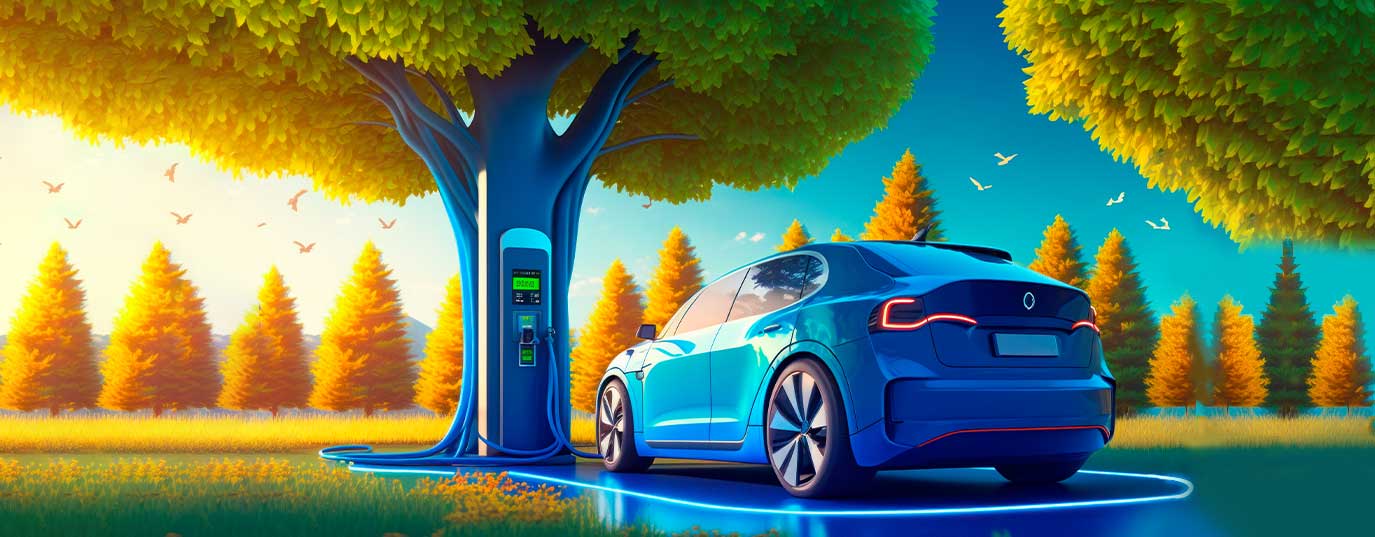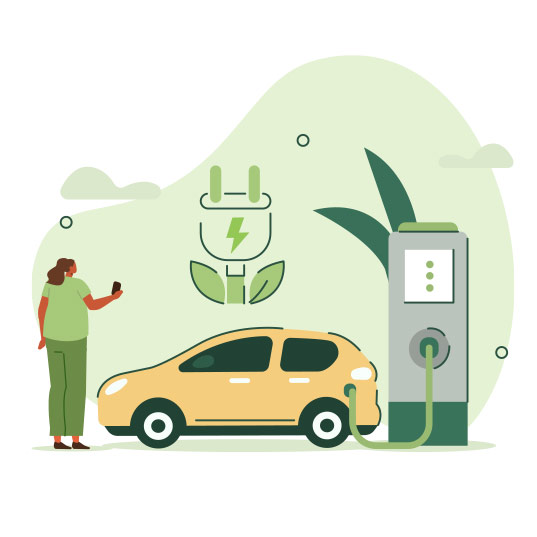Electric mobility is driving the market. Is now the time for an electric car?
The advantages of the electric car make it an increasingly attractive option for more people. Is this the moment to make the switch to electric mobility?
The electric vehicle market is continually growing - and this is no surprise. It has many factors in its favor: technological development, national legislation, and interest from consumers who are increasingly aware of the significance of sustainable mobility. Electric vehicle advantages finally seem to be outstripping the drawbacks. But is that really the case? Let’s analyze the issue.
What will I learn from this article?
- Advantages of having an electric vehicle
- Drawbacks
- Has the time come to switch to electric mobility?
Advantages of having an electric vehicle
We’ve listened to the argument for years – that electric vehicles will be the movers and shakers of future mobility. But when will our present become this future? Is it now? For many drivers, buying this type of vehicle still raises many questions. But plenty have also been persuaded by their advantages.
Although the electric car is not being introduced as quickly as governments had hoped, 2022 was still the best year so far: zero-emission vehicles represented 10% of total sales of new automobiles worldwide, a record. According to The Wall Street Journal, 7.8 million electric automobiles were sold last year, 68% more than in 2021.
“In 2022, zero-emission vehicles represented 10% of total new car sales worldwide”
Transport continues to be responsible for 24% of direct CO2 emissions from the burning of fossil fuels, says the International Energy Agency (IEA). Road vehicles represent almost threequarters of all transport emissions. As such, one of the advantages of electric automobiles is undoubtedly their contribution to reducing our dependence on fossil fuels and the environmental impact of transport, minimizing CO2 emissions.
It's important, however, to remember that an electric vehicle is not clean by itself. It can only make that claim if the electricity it uses is renewable. If the electricity is produced from fossil fuels, then the more electric vehicles there are, the more emissions. From here stems the importance of energy transition policies and introduction of renewable energies in industrialized sectors.
Another advantage is maintenance costs, lower because electric vehicle technology is relatively simple. Apart from inspecting the brakes and headlights regularly, and filling the windscreen washer, there’s little to do: there are no oils or filters, no turbo-compressors or transmission that can fail.
Overcoming old obstacles
The autonomy of electric cars, the maximum distance they can travel without recharging the battery, has been one of the great disadvantages of this kind of vehicle. But advances in the field have been impressive. There are already several models for sale that break 500 km autonomy, i.e. that can travel from London to Paris by road without worrying about recharging.
The sparsity of recharging stations has also been a big stumbling block. A study by the vehicle scrap company The Clunker Junker, which operates across the US, analyzed worldwide the number of recharging points for every 1,000 km of highway in cities above 100,000 inhabitants.
Cambridge in the US state of Massachusetts has the highest proportion of recharging stations in the world, with 225.9 points for every 1,000 km of highway in the city. Indeed, seven out of 10 cities with more recharging points per 1,000km of urban road can be found in the US.
European roads increase the presence of charging points (if not so much electric cars)
 Europe also continues to take steps to achieve neutrality in CO2 transport emissions. The European Council and Parliament struck a deal to expand recharging infrastructure through the installation of electric vehicle recharging stations of 400-kilowatt capacity at least every 60 km by 2026 - and intends to increase their capacity to 600 kW by 2028. The text of the agreement also establishes an obligation to make recharging stations available every 120 km for trucks and buses.
Europe also continues to take steps to achieve neutrality in CO2 transport emissions. The European Council and Parliament struck a deal to expand recharging infrastructure through the installation of electric vehicle recharging stations of 400-kilowatt capacity at least every 60 km by 2026 - and intends to increase their capacity to 600 kW by 2028. The text of the agreement also establishes an obligation to make recharging stations available every 120 km for trucks and buses.
For now, the EU country with most public recharging points for electric vehicles in 2022 was the Netherlands, with 111,821, followed by Germany (87,674), France (83,317), Italy (37,186) and Spain 34,380 (which had a target of 100,000 by 2023).
Despite the clear increase in recharging points for electric vehicles, penetration of the electric car is still limited in countries like Spain, where the market share reached just 9.6% in 2022. This leaves enormous room for growth in Spain when you compare it with 21.7% in Portugal, 21.5% in France, 31.4% in Germany and 56.1% in Sweden.
Where do we find electric vehicle recharging points?
As well as roadside public recharging points, we can recharge our vehicles in the following places:
- At home: the ideal option for cars kept in the garage overnight, where they can be charged conveniently during night hours, ready to leave home first thing.
- At work: more companies now have recharging points in the garages below their offices, both for employees and suppliers.
- At points of sale: same goes for shopping malls, hotels, supermarkets, and other commercial outlets. It is not rare to find them providing electric mobility installations.
- At electric “filling” stations: if we can fill up with petrol or diesel at a filling station, you can imagine what’s on offer at an electric “filling” station.
Find out more this article.
A good time to buy an electric car?
Electric vehicles have undergone significant technological development over the past 20 years which have not only made them cheaper but also increased their utility.
Sustained public policy support has been one of the main reasons for the sector’s progress. The latest IEA data shows general public spending in terms of subsidies and incentives doubled in 2021 to nearly USD 30 billion.
More and more countries are setting ambitious goals to expand electric mobility over the coming years. The European Commission has set the goal of banning the sale of new cars and vans emitting carbon dioxide by 2035.
Meanwhile, many automobile manufacturers plan to electrify their fleets well in advance of the political objectives. By the end of 2021, there were five times more models of electric cars (450) available on the world market than in 2015.
Though there are still challenges to overcome, progress in electric mobility is clear. The offer of models is much larger and prices are more affordable than in previous years. Many governments are also offering incentives to buy electric vehicles, which could be a decisive factor for those who are planning to transition to this technology. The future we will drive will indeed be electric and renewable.
Sources:





